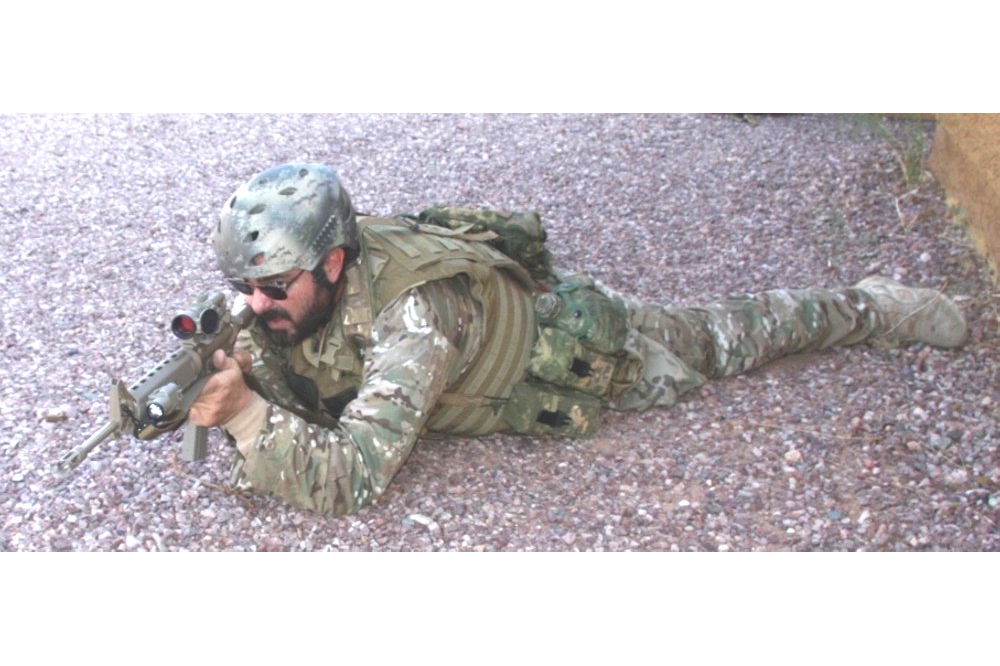
Misc. Review: Exploring the Individual Combat Load.
The purpose of this essay is not to give a definitive answer, but to explore the issue, and through anecdotes, help you to determine what may work best for you. And guess what? You won’t get an answer solely by reading. You will have to load-up and get sweaty to find what works for you, what doesn’t, and what you will have to adjust to find your balance.
When I was a ninja-warrior, my basic load often exceeded 90 pounds, and back then I was an extremely fit 185# 18 year old. That was a third of my body weight. Add a parachute and reserve and “shuffle to the door” is more of “stagger to the door.” Now I’m a far-less-fit 50-something. It takes constant training to operate effectively with such a heavy load. The full time soldier is simply more capable than the typical citizen. The citizen who believes he may one-day be called to armed conflict, must adapt.
To accustom soldiers to carry burdens is also an essential part of discipline. Recruits in particular should be obliged to frequently carry a weight of not less than (60 pounds), and to march with it within the ranks. This is because on difficult expeditions, they often find themselves under the necessity of carrying their provisions as well as their arms. Nor will they find this troublesome when inured to it by custom, which makes everything easy.
While he has been discredited as a historian for fabricating data, S.L.A. Marshall did write an interesting report entitled The Soldiers Load and The Mobility of a Nation. In it, he notes casualties at Normandy caused by overloaded soldiers drowning as they stepped off their landing craft. He suggests a combat load around 40 pounds to be ideal.
One can certainly argue that the US military tends to pack the kitchen sink, just in case. As more often than not, our soldiers are operating from vehicles, this equipment-heavy philosophy does not get the scrutiny it may deserve. When finding themselves without vehicle support, the load changes dramatically.
The other extreme is the guerrilla fighter, who may have little more than his grandfather’s rifle, one or two magazines, and a pocketful of rice and dried fish. My point is that it is not a simple question, and there is no simple answer.
While for some, dressing up like a warrior and going to the range is purely a recreational activity, for many like me, in the back of our minds, is the thought that there is a purpose to this. That at some time in our lives there may be a collapse that requires us to take up arms.
When I participate as a student, I wear everything. I found in years as a student and as an instructor, in the military and as a frumpy civilian, that I learn as much about my equipment as I do about whatever the actual subject of the training may be. Sure I may learn a new technique for a magazine change, or firing around obstacles, but I also learned that my kneepads caused more discomfort than the rocky gravel they were to protect me from. Lose the kneepads entirely or just find different ones that fit better? Still don’t have an answer. Or my AK sling may be genuine Bulgarian military issue, but it’s just too damn short for what I want to use it for. So wearing your equipment for extended periods is simply unavoidable if you wish to work out all the kinks before it matters.
So this is going to sound silly, but it works. Fill all your pouches to capacity and put it on Saturday morning. Leave it on during waking hours ’till Sunday night. Mow the lawn with it. Play catch with the kids. Wash dishes with it. Go to the grocery store with it (ok, you don’t need to wear it in the grocery store). The point is that most people only put on their gear when they’re ready to play ninja warrior. The reality of military and para-military life is that you wear your basic combat load and your rifle all the time. Doing every-day activities once in a while, with all your gear on will really help you determine what works and what doesn’t. And if it is a matter of “too much stuff” or “I need to toughen up”.
After a day of painting the walls in my house a two-tone mocha color, and the outside of the house a medium brown with red-brown trim, I noticed my jeans looked a bit like Multicam. So on impulse I dabbed a bit of my latex house paint over my straight color green and brown load-carrying equipment. It took on quite the Multicam look. Spray paint doesn’t work as well. It is too thin and soaks into the nylon without leaving much pigment. The latex does better. It will eventually fade and wear but it is a down-and dirty way to mix up a straight color, if you are so inclined. The point is to make your equipment choices based on what best serves your needs, and not for matching colors and patterns to look cool. Color-coordination? Get over it already!
Each method of carry offers something different in available real estate. I will be examining the following:
- chest rack (and extended chest rack)
- combat harness (ALICE vs MOLLE)
- vest and armored vest
- discrete carry
There are a variety of closures used. Snaps can be noisy, as can velcro. Velcro can load up with debris and stop grabbing.. Clasps are most likely to break and buckles are perhaps slower. Velcro can most easily be expanded for different size magazines. And this brings up another point: is your equipment magazine specific?
I typically use parachute cord pull tabs on my magazines. There are other methods such as the Magpul finger pieces, but they also make the magazine taller and wider, which can make it difficult to insert the number of magazines for which the pouch was designed. Another similar issue is the magazine floorplate. Some like the FAL and M16 slide inside the magazine body. Other floorplates like the HK G3 and the L1A1, slide around the outside of the magazine body. These make the same caliber magazine effectively wider and reduce the quantity that fit in a given space.
Magazine pouches are generally for three sizes: 7.62x51mm 20 round (FN FAL, M14, HK G3), 7.62x39mm & 5.45x39mm 30 round (AK-47/74), and 5.56mm 30 round (AR-15 type). It is important that the magazine is accessible: that is, you can easily grasp the magazine to remove it from a pouch. If the pouch is too deep, it can be difficult extracting the magazine. This is why the fact that a magazine will “fit” in a pouch (a FAL magazine fits in a double M16 pouch) is not enough to make it a wise choice. It has to fit and be accessible.
I have a simple modification for many magazine pouch types to allow easy access to shorter magazines. Using a soldering iron or a torch-heated large nail, melt one or two holes through the pouch near the bottom and knot a small piece of cord so that the bottom of the pouch is closed off. To use larger magazines, remove the cord.
With my pull tabs, I can get away with using M16 magazines in an AK pouch. The cord makes access a little easier. It is mandatory with a 20 rd magazine. One can also stuff something in the bottom of the pouch.
If you have more than one rifle type, you will have to decide on whether to have separate carrier, or to use the same carrier and switch pouches. As this is time consuming, I suspect that most will just get a second set of gear.
When I evaluate methods of carry, it will always be “+1”, that is, a certain number on the equipment, and one in the gun. I will not use the one in the gun as part of the weight.
Most modern gear is made for MOLLE. Since the military uses it, most companies making modern pouches make them to fit MOLLE. It has the additional advantage of laying flat and snug on chest carriers, vests, packs, etc. It doesn’t flop around as much as ALICE. But one is limited to placing it only where the correct number of weaves are available. I find this particularly annoying on MOLLE belts, as there is rarely any ability to mount right by the buckle.
ALICE was the standard from Vietnam through the early 90s. It has the advantage of being dirt cheap and allowing a wider range of positioning, albeit on a specific belt. It can be fastened to MOLLE using cord, but tends not to lie as flat as dedicated MOLLE. There are also commercial adaptors to connect MOLLE to ALICE or vice versa. The deficiency of this adaptor is it tends to allow the pouch to flop around more, and have significantly more rotational movement.
Civilians planning for an unknown event sometimes have to make one size fit all. If one has the luxury of operating in teams, one should give strong consideration to logistics. One must balance the benefit of different calibers to different roles, against the benefit of a uniform ammunition and magazine type.
However one imagines they might be involved in armed conflict, for the sake of this discussion I will break the load into light, medium, and heavy.
Light is for the guy trying to maintain some degree of discretion. He may have a rifle disguised in some other case. His ammunition may be in an innocuous shoulder bag. He has the advantage of being able to run fast, climb, etc. Speed and agility or low-profile outrank firepower.
Heavy is for the guy defending a fixed position or assaulting a fixed position, who imagines he may be involved in sustained suppressive fire. Firepower outranks maneuver. Or he may be operating from vehicles where he can have equipment he need not personally carry (but he must be mindful of what he has to carry if separated from his chariot).
Medium is probably the most common. The basic rifleman. Trying to find balance between speed, agility and firepower.
If you are operating in teams, one might consider the need for a handgun less, as your buddies can cover you during magazine changes or malfunction clearing. A handgun also gives an operator the ability to maneuver in confined spaces where a rifle or even a carbine may be more difficult to employ.
If you choose to carry a handgun, one must decide where to keep it. Some popular locations are:
- drop leg (thigh). This is fast. It exposes the handgun to snagging. The method of securing must be foolproof. I’ve seen far too many students with poor quality thigh rigs end up with their handguns falling out, or sliding around to the back of the leg. When I use a thigh rig, I like it to be relatively high on the thigh. Just low enough that the gear above it does not prevent a smooth draw. A friend shot himself because he carelessly had his finger on the trigger before completing his draw stroke, and impacting the back of his hand on a magazine pouch caused him to pull the trigger. Difficult when operating from vehicles.
- appendix carry. Some like it. I don’t. It is fast. It is more difficult to draw from prone
- belt carry. Either high on the belt like a typical OWB holster or further back like an SOB. I like this in conjunction with a chest pouch, but not with a harness. Difficult to draw when operating from vehicles.
- chest carry. Either in an empty magazine pouch or a holster designed to be mounted to a plate carrier or vest. Difficult to draw from prone but not so difficult as an appendix carry. Handgun is generally subjected to more abuse when prone than a thigh carry. Very efficient when operating from vehicles.
- fanny pack. I sometimes use this particularly when traveling light or more discretely. It is the slowest, but the handgun is best protected.
Your Base Layer is your survival essentials. Things like a knife, a fire source, a compass, perhaps a few energy bars. This is what you have left when you drop your stuff and run for your life. For this reason, some prefer their handgun be attached to their person, so they remain armed if they have to ditch their harness and rifle. Some include a first aid kit on their base layer.
Your Combat Layer is your equipment belt or harness, that primarily carries your magazines. Some include their handgun and first aid kit on this combat layer. Perhaps canteens and a dump pouch.
Your Sustainment Layer is generally a backpack. This will have inclement weather gear, additional food and water, shelter, and the like. When I was in the military, it was typical to drop our rucksacks at the Objective Rally Point and conduct the assault with just our base and combat layers. This is the gear you can most afford to lose. If one is carrying a pack, it limits what one can have on the back of the combat harness.
I prefer a chest rig that has attachment points under the arms as well as the chest area. A single magazine pouch under either arm allows me to extract a magazine from prone position either left or right handed. Chest rigs with all the magazines centered are great for extracting a magazine while standing up or moving, not so much from the prone position.
Closely related to the chest rig is the Ranger Rack. This is designed for the magazines to sit lower and has additional attachment points on the chest. It is more of an apron, but not as large as the Russian RPK-74 gunner apron (which is particularly well suited for the tall 45 rd RPK 74 magazines). The Ranger Rack has the most real estate of any of the chest rigs that I am familiar with, but has no padding on relatively thin shoulder straps.
I have experimented with adding padding to the straps and it has promise. A strong advantage to the Ranger Rack is that is can be worn in conjunction with a harness, as well as by itself. It also is clear on the back so as not to interfere with a rucksack.
is 3-pouch (6 magazine) chest rig by High Speed Gear is compact and well made. It allows only 6 magazines and a zippered compartment that drops down into a map-reading table. As a stand-alone unit for light to medium load, it is pretty good. It lacks the ability to be mission-tailored as MOLLE units do. It has one nice feature – it is small enough that it can be worn in conjunction with a harness.
Another nice feature is the protective flaps can be secured either with buckles or with velcro.
On a chest rig, I prefer as many pouches as will fit. On my Condor chest rig, that is 6 double pouches. I don’t have to use them all. I can carry a maximum of 12 magazines. This is fine with an AK-74 or M16. With an AK-47, it is probably too much weight. An advantage to having 6 double pouches instead of 3 double pouches, is weight distribution. One magazine in each of 6 pouches distributes the weight better than 6 magazines in 3 double pouches.
I can trade two rifle magazines for a handgun, and carrying the handgun in the right most magazine pouch. I can also carry it on a belt or thigh holster and use all 6 pouches
I picked up a Blackhawk! chest rig many years ago. I liked the well-protected pouches and the stiff backing made for good rigidity and support. The shoulder straps are well padded. It fits 8 AK magazines or 12 AR magazines. But it had a large cargo pocket on either side of the magazine pouches. I found those annoying so I unstitched them. Only after removing them did I determine that the loops along the bottom (for attaching the vest to a belt) were attached to the pouches and not to the chest rig’s backing. The heavy material made it impractical to sew them back on, although I’ve considered riveting them. As it was a solid color, I sponged on some paint for an ersatz Multicam.
I prefer the Condor, so just tossed in my “stuff to mess with later” bin, but for a stand-alone unit, it is very nice.
One advantage to the combat harness is that it allows one to get closer to the ground. When one is receiving incoming fire, the closer to the ground one can get, the better. Undoing the buckle allows the combat harness to flop on the ground making access to pouches easy while retaining a low profile.
A MOLLE combat harness in my opinion is optimal for one travelling light. It has good equipment security, comfort, and fairly good weight distribution. While it has little real estate, that may not matter if the goal is travelling light.
I bought a Blackhawk! MOLLE harness that I’m still playing with. It has a lot of real estate but it also has a lot of straps, which I suppose are good for weight distribution. Once I get it set up, I can roll and tape the dangling ends, or cut them shorter. Right now it is a challenge to adjust them uniformly.
I like the ALICE combat harness. Part of my preference is that I am used to it. It was what I was issued when I was an Army Ranger. Except we had stupid rules requiring us all to look the same regardless of what our weapon or mission was. So as an M60 machinegunner, I still had to keep two m16 magazine pouches on the front. Dumb! Thankfully a few wars seems to have helped alter the hive mentality of the 1980s Army. My SF unit had no such restrictions.
There are a lot of more modern backpacks available today and for light work I am happy with my Voodoo Tactical and my Condor “3-day packs”. One would be hard pressed to tell them apart from ten feet away. They have a synthetic plate in the back that gives it decent rigidity. But they won’t really hold three days of gear, particularly in cold weather. Mostly I use them for carry-on luggage when travelling by commercial air.
I find myself returning to my Large ALICE pack with Tactical Tailor modifications, or the purpose built Tactical Tailor pack that fits the ALICE frame. The ALICE pack is robust and while it may lack the weight distribution of some internal frame modern packs, the external frame has one feature I love – it keeps an airspace between the pack and my back. It is much cooler and in my Arizona Desert environment, that is of great importance.
When using an ALICE harness without a pack, I like to have the belt sit on my hips for weight distribution. But The ALICE pack kidny pad will press directly on the belt and buttpack (I have removed the metal “meat hook” fasteners and replaced them 550# parachute cord). So I use a 550# parachute cord extender on the buckle which allows me to lower the harness to sit below the rucksack. When I drop the ruck, I can raise the harness using just the suspenders.
I prefer the older style brass hole and stud buckle and parachute word works fine with it. For later plastic buckles, one can buy an extender made for the plastic buckle.
M16 pouches that hold three magazines side by side are common and cheap. They will also hold 2 magazines with floorplate extenders, such as the Magpul.
Due to it being “old school” and “obsolete”, ALICE gear is the most economical of the load-carrying systems.
Harnesses come in a “Y” and an “H” for the back support. I prefer the “H”, which is the older style. I suspect the change was to save a few pennies in production. As mentioned, remove the steel “meat hooks” and replace with parachute cord.
For the FAL, M14 magazine pouches work fine. For the L1A1 and the HK, with their wider floorplates, it can be difficult to fit 2 magazines into on. I have had some luck in attaching additional magazine pouches to a buttpack, attached to the rear of the belt, like the South African pattern harness. But unless the pack is stuffed full, the magazine pouches tend to flop around. I am working on sewing or riveting the pouches directly to my buttpack.
A combat harness can usually be worn over a chest rig, a Ranger Rack, or plate-only plate carrier.
The US Army “Fighting Load Carrier” is part of the MOLLE II system. It is inexpensive (about $20 on the surplus market), and its light mesh construction makes it comparatively cool, but the deal-breaker for me is the supposed one-size-fits-all. Not so. I’m 5’11” and the extraction handle that should be on the upper back cuts the back of my neck. It also does not readily adapt to carrying an ALICE belt, which is a shortcoming that to me defies reason. They come in the blends-with-nothing ACU green and desert sand. So either one will likely need some paint splatter.
bought a Condor vest to evaluate and aside from it being hot, I am absolutely thrilled with it’s weight distribution. It also readily adapts to an ALICE belt so I can attach my canteens and other stuff to the belt, using the vest as shoulder support. I was concerned that its modest price would correspond to poor quality, but such was not the case. I did finally break the zipper, but it also buckles that serve the same purpose. I think I’m in it around $100 for the base vest and the two 6 magazine (3 pocket) pouches.
I particularly like the attachment points at the bottom, to which I can affix an ALICE belt, buttpack, and canteens. This keeps the back clear for wearing a pack. Without a pack, a Camelback water bladder can be attached, which also serves to counterbalance the weight of the magazines on the front.
One area that I found troubling was that the additional real estate of the vest had limits. In order to smoothly draw a magazine from a pouch, the area immediately above the pouch has to be clear. I discovered that I had trouble fully drawing a magazine because it would hit the pouch above it and hang up. This is something that may make the available real estate on a vest less than it initially appears. This is extremely important in choosing where to locate a handgun – you must have an unobstructed draw stroke.
Within the vest category is the full-body armor rig (Interceptor) and the hard-plate-only. Hard-plates-only are more like a small chest rig, but I think using them as attachment points is of little value. It seems easier to me to simply wear a Ranger rack or chest rig or combat harness over the top of the hard plates.
The soft armor with plates, such as the Interceptor (front closure), Spartan (cummerbund) , and many newer designs, have a lot of real estate due to the greater size. Newer models include quick releases to jettison the heavy armor should one need to (vehicle extraction, falling in water. As far as attachment points, they are essentially the same as a vest. It is heavy and one must train constantly to operate effectively with all that armor. It is even more difficult to go prone because of the thickness of the armor. And they are HOT.
Spartan soft armor with hard-plates. While they have plenty of room for MOLLE pouches, the bulk made me choose to wear an ALICE harness with it.
Lighter and less bulky than the soft-armor with hard-plates is what I call a “plate-carrier-plus”. This is a blend between a chest rig and a vest, with pockets for an optional front and back hard-plate. If you are considering hard-plates, but maybe not all the time, this may be the best option for you. Plenty of real estate, and good weight distribution. It can be worn with stuff on the back, or leaving the back clear for a pack. With plates, the pack is not particularly comfortable.
In my Arizona desert heat, I must balance the rigidity of multiple layers of stiff nylon (to support the plates) with the additional heat they generate.
The cummerbund makes for really nice weight distribution.
On the other hand, loud colors may be more deceptive as they don’t scream “military”. This is for the sheep. It is unlikely that you will fool another alpha-male unless you are really good at humbling your demeanor. Alphas note other alphas regardless of their attire.
Shortcomings are limited capacity, and poor weight distribution.
The inevitable result will be a pile of gear like you see here that is “almost right”. But I have multiple family members and friends who are less motivated to pursue the ideal and these “spares” may work just fine for them. So don’t be discouraged if you find some flaws in your choices. You are miles ahead of those who never leave the living room with their “tactical gear”.
Does a civilian fighter with a semiautomatic rifle expend as much ammo as a soldier with a fullauto and usually quick resupply? A civilian fighter, should avoid conflict, particularly an extended firefight.
I emphatically agree that a guerrilla fighter has little to gain and much to lose by going toe-to-toe with a professional adversary. The guerrilla does not have to win, he only has to not lose. Running away is a legitimate role for the guerrilla. George Washington was an expert at keeping his forces intact and keeping the British spread out, guarding large areas. He was able to bring his forces together when it mattered – Yorktown.
lives to fight another day.
But he who is, in battle slain
will never rise to fight again.
The guerrilla may have little to no resupply. If he is being pursued, he cannot return to base without endangering his fellows. So in my opinion it pays to have a light enough load to move quickly, but enough ammo to suppress his pursuers and slow them down.
If one knew exactly what was going to happen, one could plan their combat load for that event. Unfortunately, it is by definition impossible to plan for the unexpected. So we have to balance what we’d like to carry (light) with what we might need (heavy) with our ability to function efficiently (balance and physical fitness).
Also, I don’t think that full-auto is really the issue. It is a common misperception that suppressive fire is “spray-and-pray” or “making scary noises”. Suppressive fire is rapid aimed fire at an area or indistinct target. You may not know exactly where the fire is coming from, but putting a few rounds on either side of that bush, this tree, and maybe several around that abandoned car, may make it more difficult for your adversary to direct aimed fire at you. And that is the goal. Killing your adversary is nice, but it is far more important that he not kill you.
I would probably carry one magazine in the gun and maybe 2 or 3 more and have something to serve as a dump pouch. An extra 40-100 loose rounds for reloading.
I can understand storing ammo loose. But it seems to me if you are carrying it, it is because you think you might need it. And if you might need it, having it in magazines makes more sense to me. The weight is negligible. Plus if you need to go into your rucksack for boxed ammo, it means you’ve already gone through your more accessible ammo and your situation is already dire.
Anecdote: At an advanced AK course, I was with a 3-man team where we stumbled on a group of evil steel plates wanting to do us harm. We opened up on them and advanced. Suddenly we discovered there were a lot more of them then we’d thought (ok, it’s notional, for an exercise). So we decided it would be wise to run away. LoD was covering my partner and me as we ran away, until I heard him shooting a handgun. Huh? He was out of ammo. I was able to throw him a magazine while staying behind cover, so that he could cover our escape. Having boxes of ammo in his pack would not have been very useful at that moment. Then while “running away” we came across a (again, notional) great place to set up a hasty ambush and were able to once again open up on the evil steel plates that were “chasing” us. Sure, it was just an exercise, but I’ll bet we went through more than 4 magazines in as many minutes and had just seconds to plan our hasty ambush. Not enough time to go digging in a rucksack.
Why retain the magazines if you have no more ammo to load into them.
The same could be said for why retain the rifle when you run out of ammo. . . I think the likelihood of finding more ammo at another time is greater than that of finding another rifle. Or maybe one of your buddies has more ammo, but since he’s traveling light, and only has 4 magazines, but has the boxed ammo in his pack (which I discussed above).
While we may be hesitant to hand out “our” ammo, from a tactical perspective, four guys with 10 rounds each are better than one guy with 40 rounds and three guys with nothing. A team is more than the sum of its parts.
20 rd, 7.62x51mm
1.57
3.13
5.47
9.40
12.52
15.65
18.78
20 rd, 7.62x51mm
1.37
2.73
5.47
8.20
10.93
13.67
16.40
20 rd, 7.62x51mm
1.39
2.78
5.56
8.33
12.00
13.89
16.67
30 rd, 7.62x39mm
1.74
3.48
6.97
10.45
13.93
17.42
20.9
30 rd, 7.62x39mm
1.63
3.26
6.55
9.79
13.05
16.31
19.58
30 rd, 5.45x39mm
1.14
2.27
4.54
6.81
9.08
11.35
13.62
30 rd, 5.56x45mm
1.01
2.03
4.06
6.08
8.11
12.35
12.17
Glock 17 (loaded): 935g 2.06 pd., 17 rd mag, 280g 0.62 pd.
- I like to carry a heavier load of magazines than some. Remember these are all “+1 in the gun” and I exchange 2 magazines for a handgun and 2 spare magazines if needed..
- FAL – 12 aluminum (240 rds) (16.44 pounds)
- AK-47 – 8 plastic (270 rds) (13.04 pounds)
- AK-74 – 12 plastic(360 rds) (13.68 pounds )
- AR-15 – 12 aluminum (360 rds) (12.12 pounds)
- A MOLLE chest rig with six double pouches is the most convenient. I can leave one wherever I have a rifle stored for rapid grab-and-go.
- The ALICE harness with 4 pouches on the front of the belt, and 2 on the back of the belt (or on the buttpack), is best for me if I am wearing a rucksack and might be wearing a plate-only carrier.
- The “plate-carrier -plus” and a harness is good, but the extra real estate is not worth the extra heat in the summer. Maybe in the winter if I might have a need for hard plates
- I think it is highly impractical for me to use the soft-armor plus plates. I feel like the Pilsburry Dough Boy.
- The Condor vest is best all-around for me if I am not using hard-plates. Its ability to accept an ALICE belt gives me the space I need for canteens and a buttpack, without preventing me from using a pack. Blackhawk! makes a similar unit. It would be nice to find a similar unit made of heavy mesh for air flow.


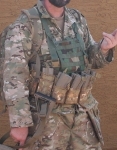
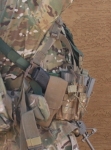
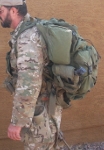
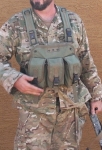
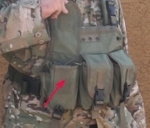
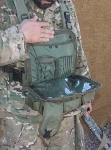
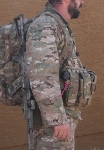




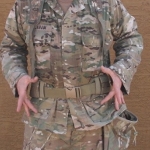
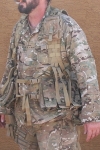

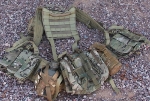
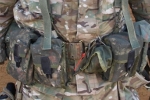

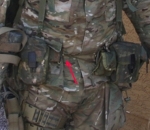


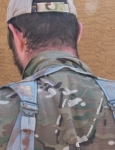

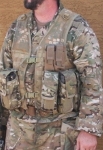




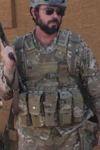









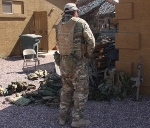
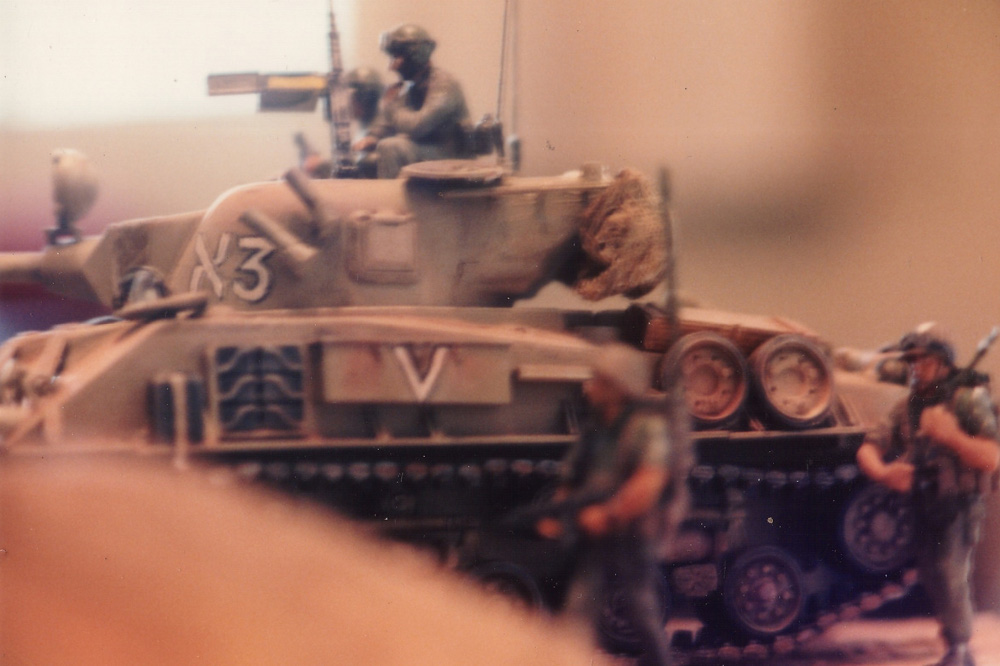
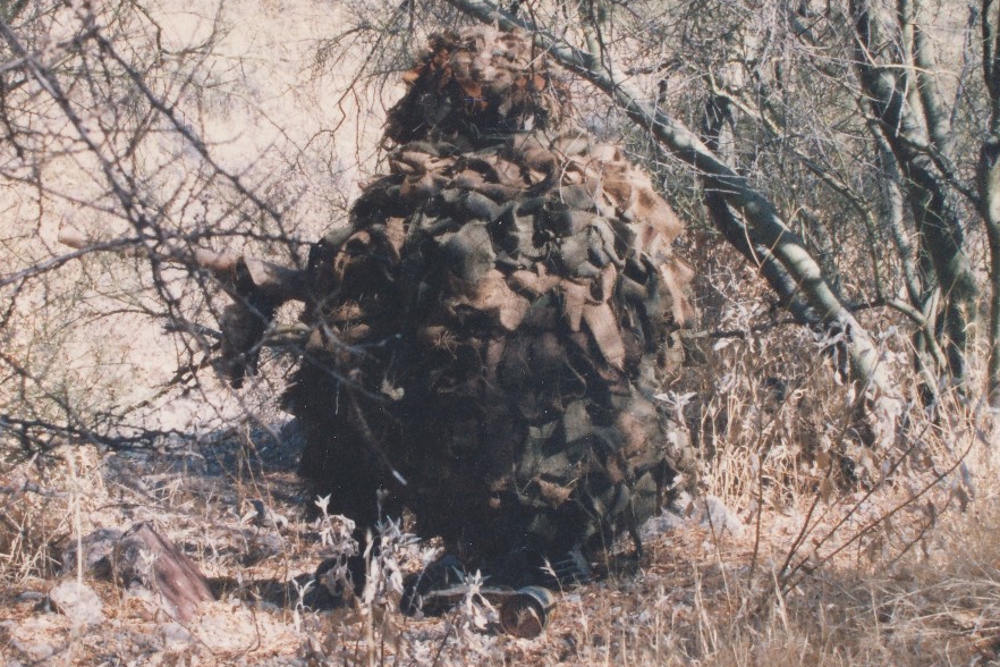
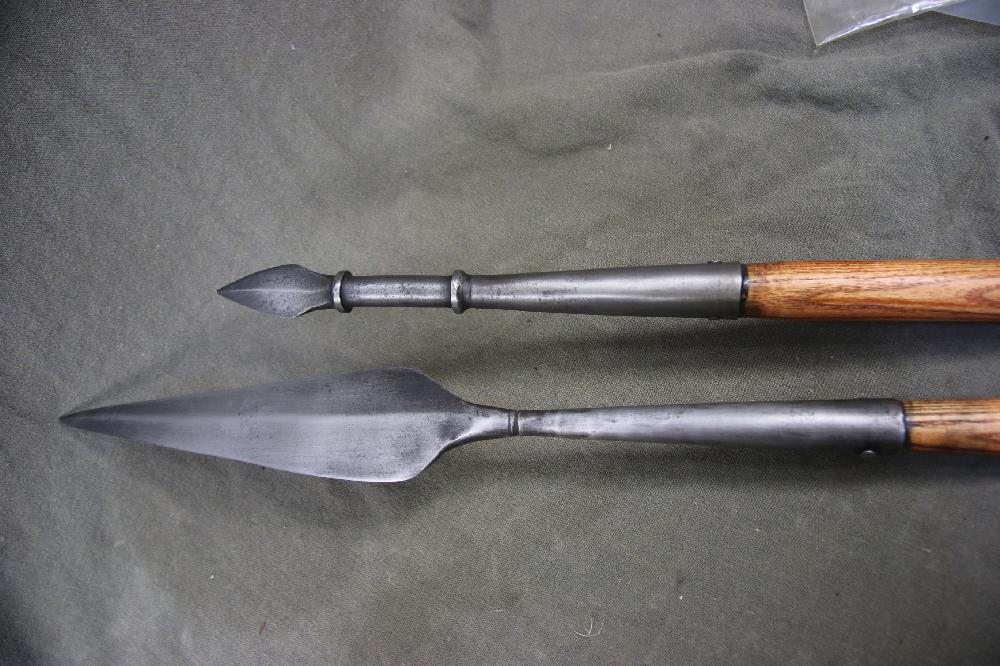
Leave a Reply
You must be logged in to post a comment.